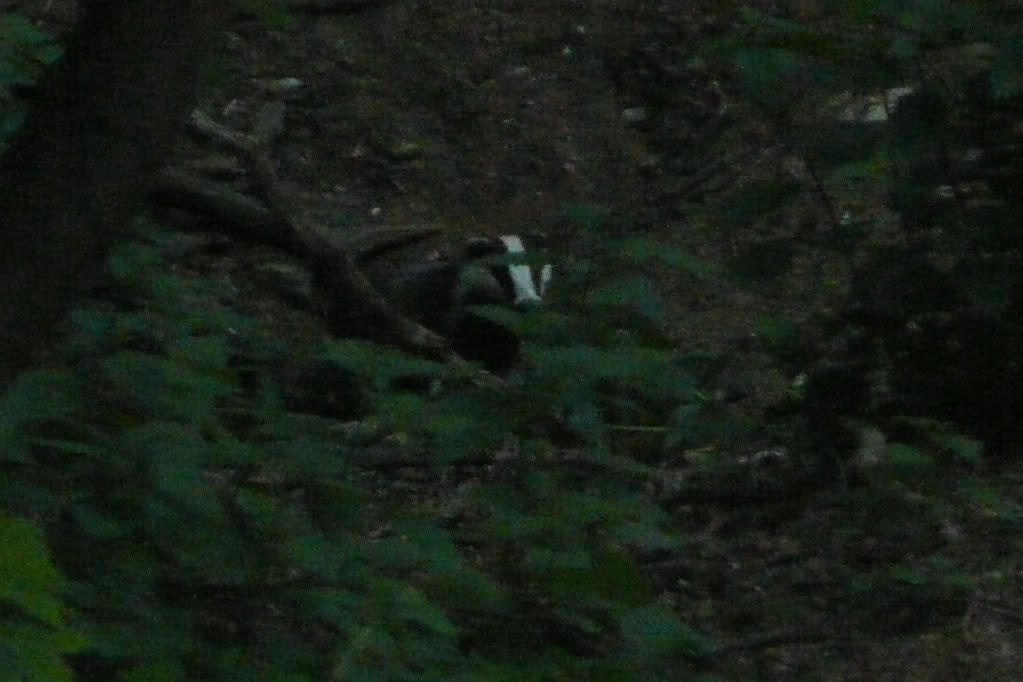Ours was at the base of a hill - which meant we had a good a view and didn't have to worry about our scent - whilst badgers have bad eye sight, but very good sense of smell.
.
.
We didn't have too wait too long for the first badger, seen trundling in along a well worn path to the set. Over the next 2.5 hours we had 7 sightings, but only two badgers were seen at the same time as we may have seen the same badger on several occasions. We were lucky, those who studied a nearby sett didn't see a thing.
Using a compact camera (no shutter) and a high ISO setting to avoid using a flash it was possible to get some photographs (even if they are somewhat grainy) without disturbing the badger
.
.
.
There are about 250 badgers at Wytham in a multitude of setts, so this census gives the public an opportunity to see the badgers and learn more about them and for the researchers to understand the badger activity at individual sets - which sets have increasing and decreasing populations, allowing them to focus their research.None of the badgers at Wytham have BovineTB (they are tested four times a year) but the biggest affect on mortality on these badgers is cars - the A45 and the A420 run nearby.
Fighting amongst the badgers can how long they live as many die from wounds infected wounds which occurred whilst fighting.
Last years harsh winter has affected last years cubs and this years very dry spring has made it a lot harder for them to find their favourite foods - snails, slugs and particularly earth worms.
As a result, the average life span of a badger at Wytham is four years, the same as a great tit.



No comments:
Post a Comment